
There are palaces all over the world that continue to captivate visitors with their grandeur, intricate designs, and enduring stories. These palaces range from opulent former residences of emperors and kings to architectural marvels that stand as testaments to rich cultural histories. As we have progressed through the year 2025, these ten palaces stand out due to the breathtaking beauty they possess, the historical significance they hold, and the sheer awe they inspire.
List Of Top 10 Best Palaces In The World 2025
1. Royal Palace of Madrid

The Royal Palace of Madrid, also known as the Palacio Real de Madrid, is a magnificent monument that stands as a testament to centuries of Spanish history, artistic excellence, and royal grandeur. It is located in the center of Madrid, the vibrant capital of Spain. This enormous palace is still a vital working building, serving as the setting for state ceremonies, official receptions, and a treasured cultural landmark, despite the fact that it is no longer the official residence of the Spanish monarch. The current royal family takes up residence at the more modest Palacio de la Zarzuela.
2. Topkapi Palace
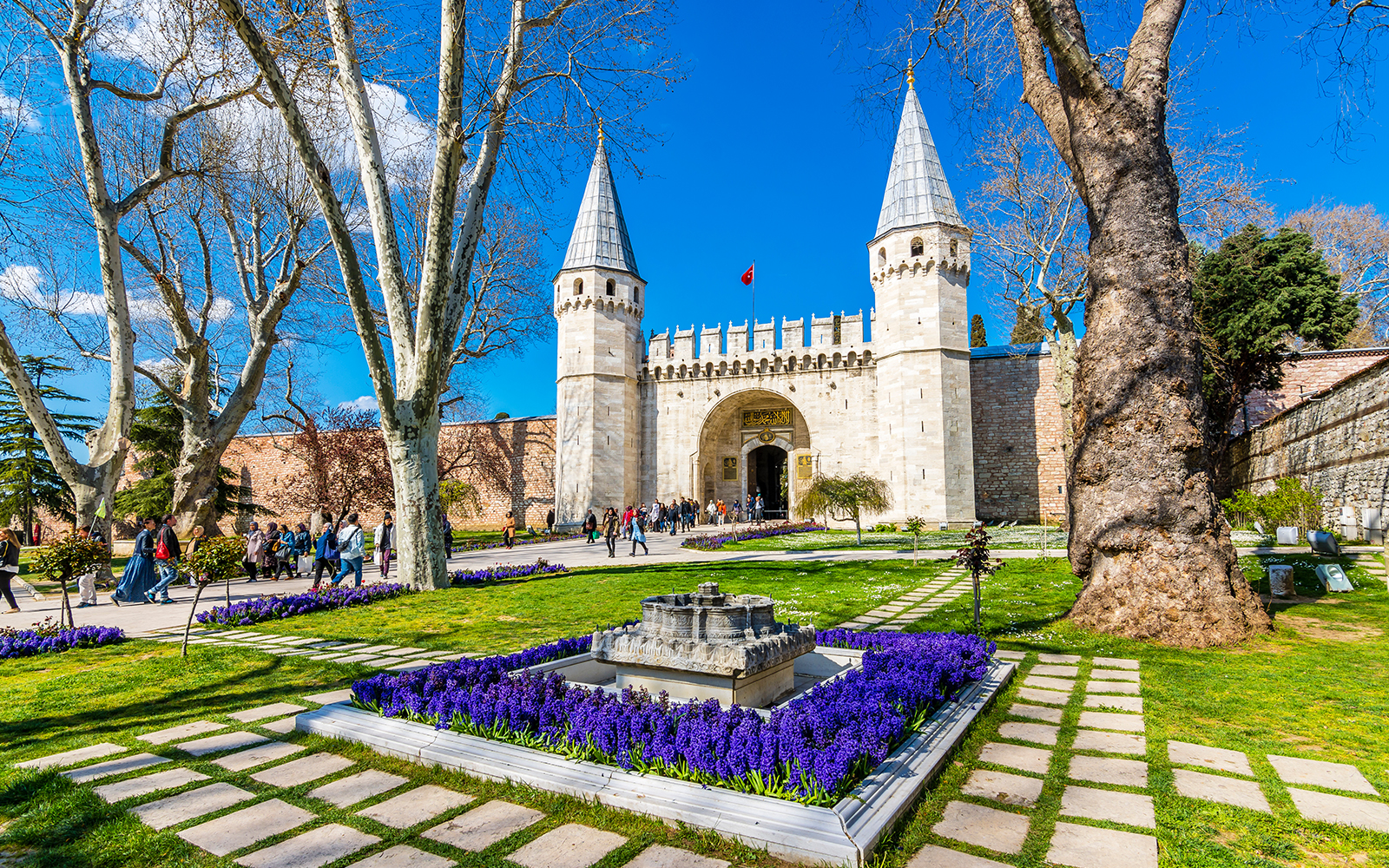
The Topkapi Palace Museum is located on the historic Sarayburnu peninsula, and it is a magnificent structure that overlooks the glistening waters of the Bosphorus, the Golden Horn, and the Sea of Marmara. This sprawling complex served as the principal residence and administrative headquarters for the powerful sultans of the Ottoman Empire for nearly four centuries, making it the beating heart of the Ottoman Empire. Today, it is recognized as one of the most important and captivating attractions in Istanbul. It is a UNESCO World Heritage site that provides visitors with an unrivaled opportunity to experience the lavish world of the Ottoman dynasty.
3. Hampton Court Palace
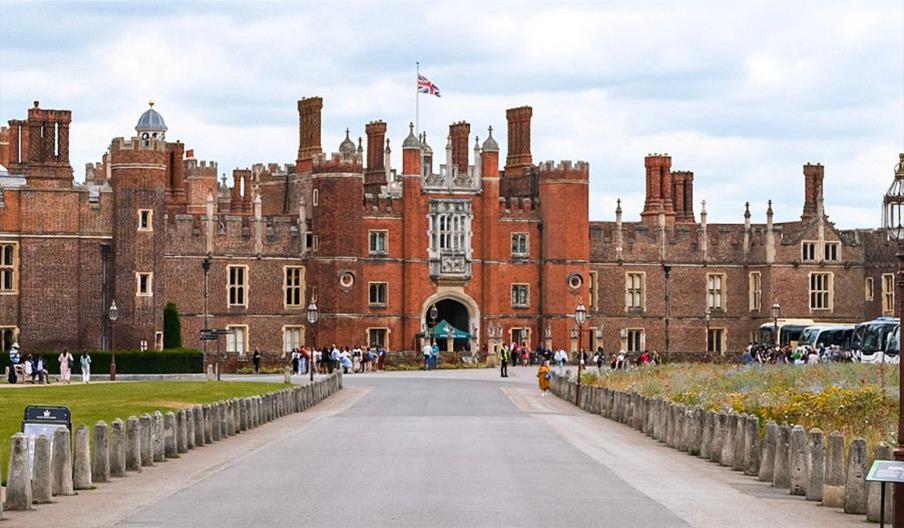
Hampton Court Palace, tucked away by the calm River Thames in Richmond upon Thames, southwest London, is a magnificent monument to English history, a great edifice that deftly combines the architectural styles and legacy of two legendary kings: Cardinal Thomas Wolsey and King Henry VIII. More than just a palace, it’s a living museum providing guests with an engaging trip across centuries of royal intrigue, power, and domestic life.
4. Buckingham Palace
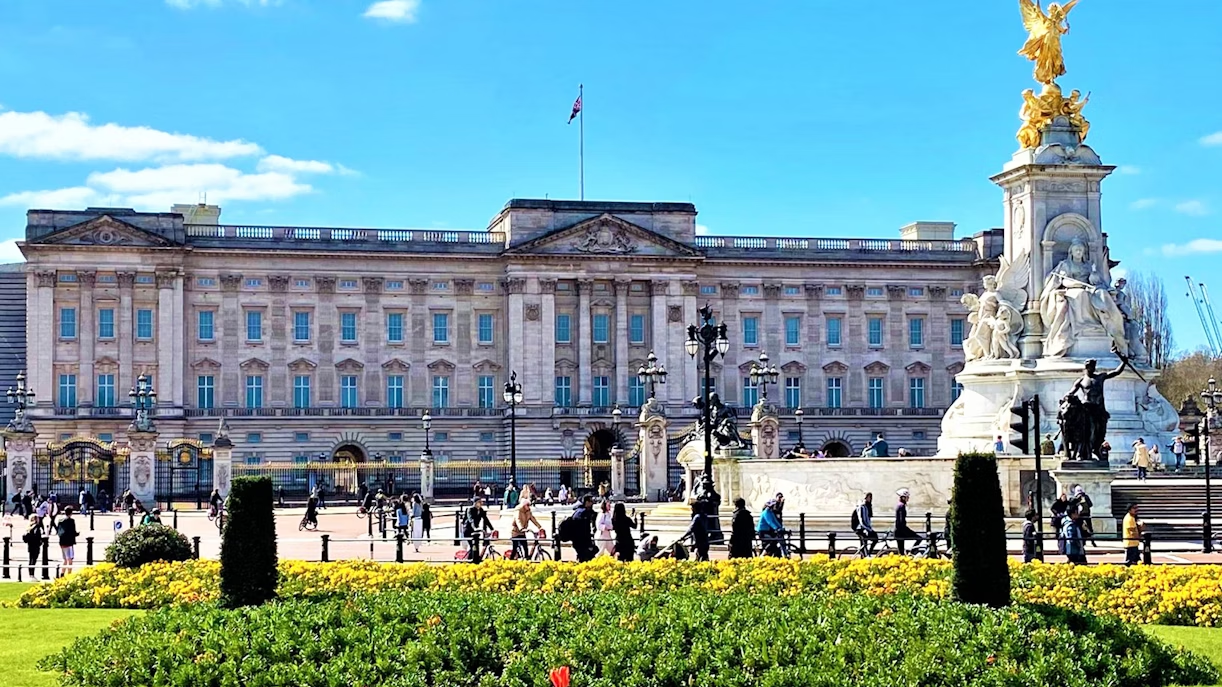
Buckingham Palace is the instantly identifiable official residence and administrative headquarters of the British king in London. Although the Royal Family mostly resides at Clarence House, Buckingham Palace is the center of the monarchy hosting many events, official receptions, and state banquets. Millions of people visit its great façade, well-known balcony, and daily Changing of the Guard ceremony every year in great eagerness to see a bit of living history. With its 775 rooms—including the lavish State Rooms opened to the public during summer—the palace epitomizes the grandeur and pomp of the British Crown.
5. Grand Palace, Bangkok, Thailand

The Grand Palace, a complex of magnificent buildings that housed the official residence of the Kings of Siam (and subsequently Thailand) from 1782 to 1925, is a brilliant gem in the middle of Bangkok. More than just a royal residence, it is a spiritual and cultural epicenter with the revered Wat Phra Kaeo, home of Thailand’s most holy religious emblem, housed here. The complex golden spires, vivid mosaics, and detailed murals in the palace highlight a magnificent blending of traditional Thai architecture with deft workmanship. From the legendary guardians to the glittering chedis, every element points to royal power and dedication.
6. Blenheim Palace, Oxfordshire, England
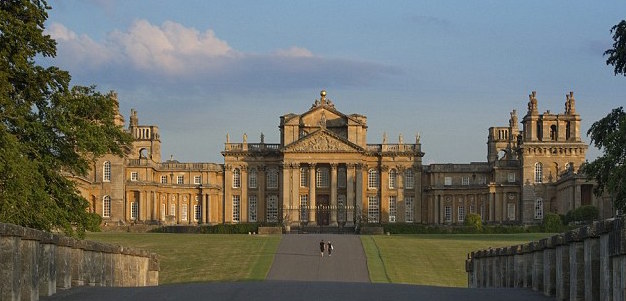
Built as a gift from a grateful country to John Churchill, 1st Duke of Marlborough, for his victory at the Battle of Blenheim in 1704, Blenheim Palace is a monumental country house in Oxfordshire, England, unlike many other palaces that functioned as main royal residences. Designed by Sir John Vanbrugh, this outstanding example of English Baroque architecture is a UNESCO World Heritage Site. Beyond only size and architectural grandeur, Blenheim is renowned as the birthplace of Sir Winston Churchill. It is a really magnificent and historically important estate with Capability Brown’s lavish State Rooms, valuable art collections, and large landscaped gardens.
7. The Alhambra
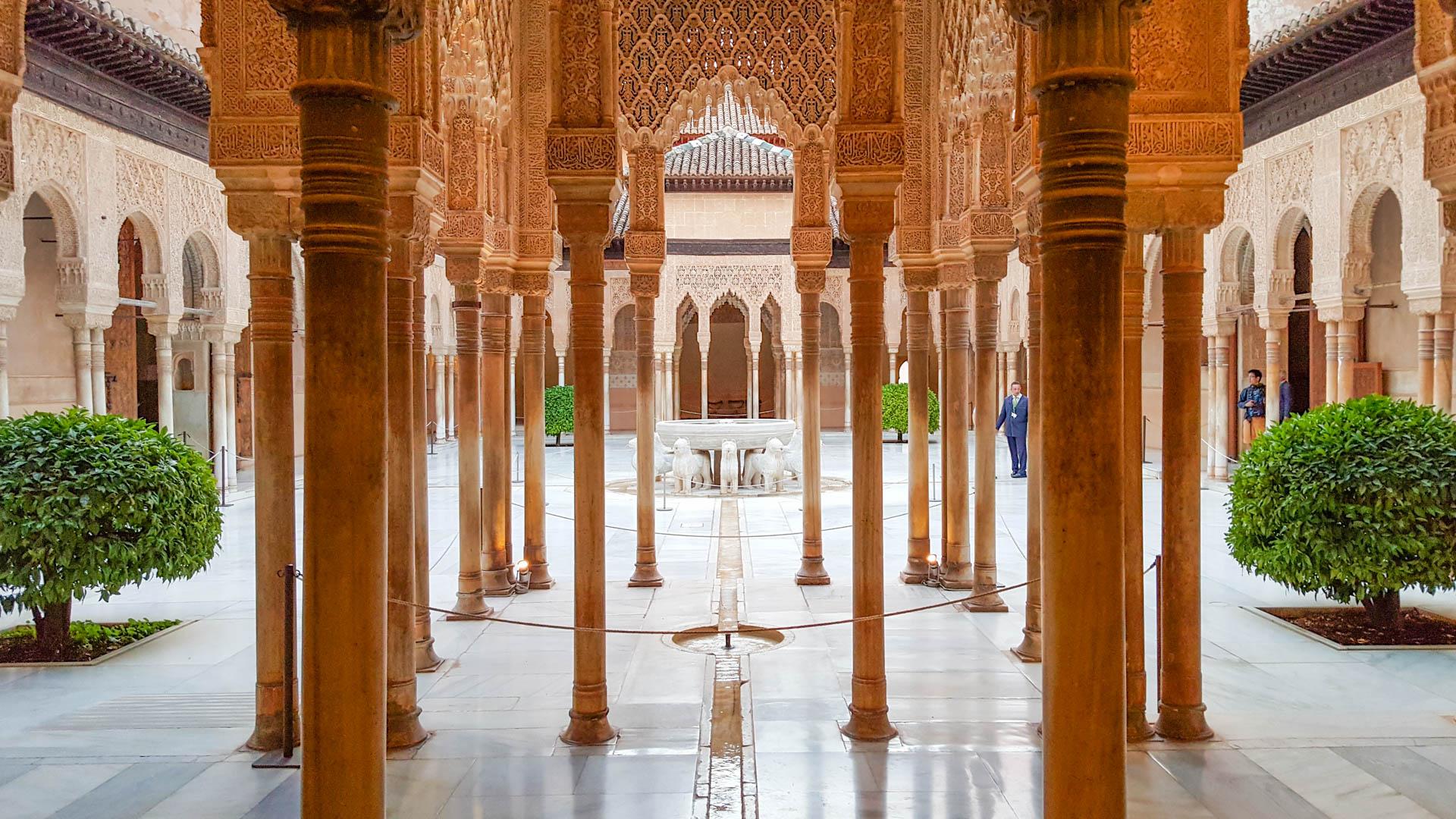
Rising majestically on a hilltop with a view of Granada, Spain, The Alhambra is the height of Moorish art and architecture in Europe. Designed mostly by the Nasrid sultans in the 13th and 14th centuries, it is known for its delicate intricate carvings, calm courtyards (like the Court of the Lions), peaceful reflecting pools, and superb tilework. With its rich vegetation and calming water features, the Generalife—its adjacent summer palace and gardens—offers a magnificent contrast. The Alhambra is an immersive trip into a poetic mix of Islamic and Spanish culture, not only a construction.
8. Château de Chambord

Deep within the Loire Valley, the magnificent Renaissance masterwork Château de Chambord perfectly captures the grandeur of French royalty. Built as a hunting lodge under commission from King Francis I in the sixteenth century, this is the largest and most identifiable château in the Loire. Most famously the double-helix staircase (probably designed by Leonardo da Vinci) and the fanciful skyline of turrets, cupolas, and chimneys, its unique French Renaissance architecture combines traditional medieval forms with classical Italian structures. Nestled among one of the biggest enclosed forests in Europe, Chambord is a monument to architectural creativity and grand royal ambition.
9. Palace of Versailles
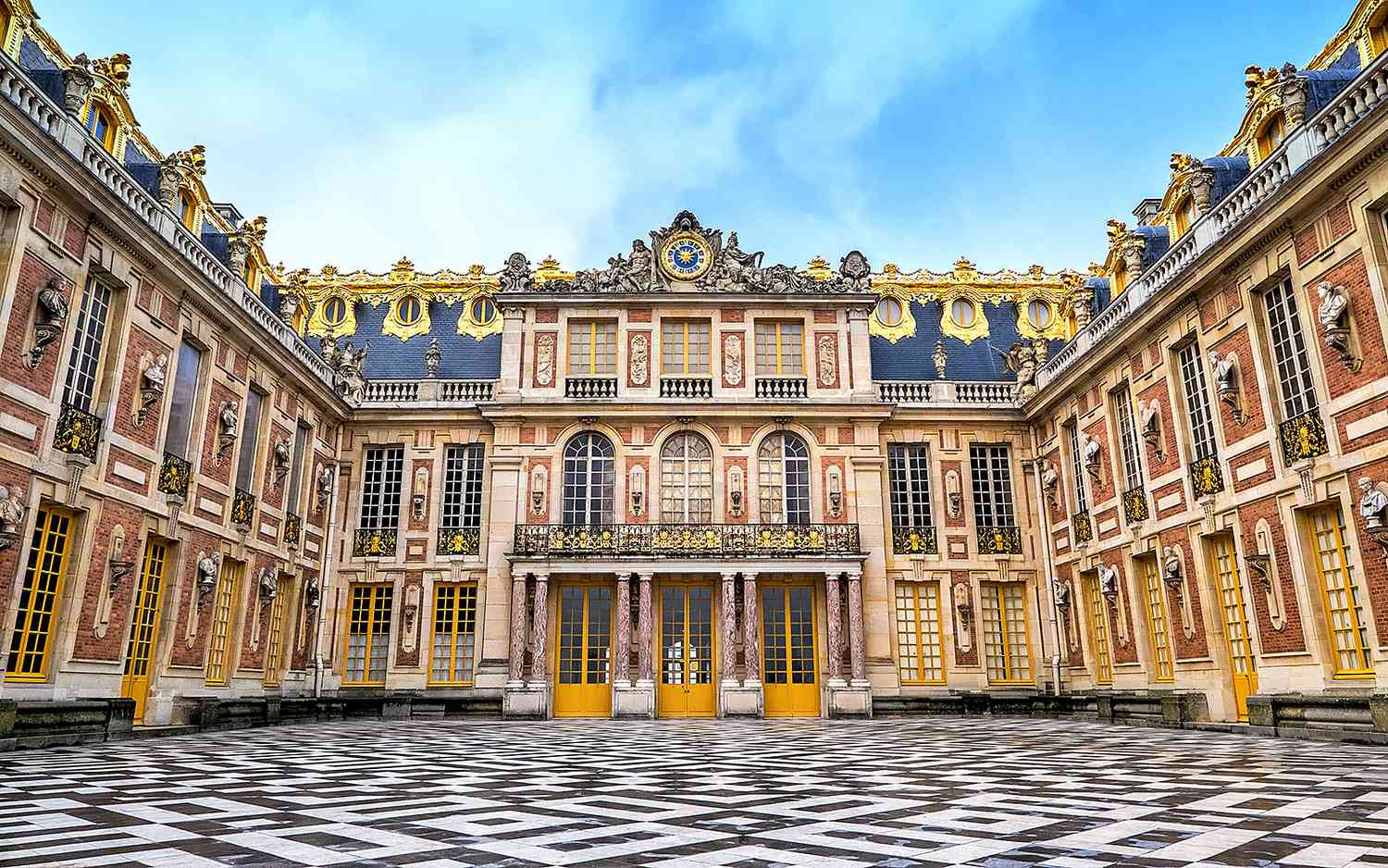
Complementing absolute monarchy and unmatched grandeur, the Palace of Versailles just outside Paris is an enormous tribute to French Baroque design and art. Originally a modest hunting lodge built under Louis XIV, the “Sun King,” it became the main house for the French court for more than a century. Versailles is an amazing emblem of power, wealth, and artistic genius thanks in great part to its sheer scale, the famous Hall of Mirrors with its brilliant reflections, the opulent State Apartments, and the vast, painstakingly maintained gardens created by André Le Noche. It still enthralls millions of people since it provides a rich window into a royal luxury past.
10. Forbidden City

For almost 500 years, Beijing’s Forbidden City—an enormous imperial palace complex housing Chinese emperors and their homes as well as the ceremonial and political hub of Chinese government—lays the very core of Beijing. Comprising 980 buildings over 72 hectares, it is the biggest palace complex in the world, built between 1406 and 1420. The emperor’s cosmic centrality is symbolized in his great halls, elaborate courtyards, and vivid red and yellow architecture. The Forbidden City, a UNESCO World Heritage Site, is a great cultural monument capturing the history, philosophy, and artistic achievements of imperial China, not only a set of buildings.






cihazla su kaçak tespiti Ekip hem güler yüzlüydü hem de çok titiz çalıştı. https://www.czechsportsagency.com/read-blog/6271
dsfg
Цена от 349 000 руб. Грузоподъемность – до 5 тонн Высота подъема – до 15 метров Размеры платформы (мм) – от 1000х800 до 5000х3000 Срок изготовления – от 10 до 35 дней Многоножничные стационарные https://energo-pole.ru/skladskaya-tekhnika/telezhki-gidravlicheskie/
столы – это гидравлические подъемники с количеством ножниц (секций) от 4 до 16. При этом наблюдается последовательность чем больше ножниц (секций) у многоножничного подъемного стола, тем больше высота подъема, однако грузоподъемность и габариты платформы – снижаются, т.к. при увеличении высоты подъема, теряется устойчивость всего подъемного стола. Гидравлический подъемный стол, может поставляться в передвижном варианте , для удобства обслуживания складов и производств, в данном случае, такой подъемник может комплектоваться съемным пандусом для загрузки с пола.
Столы из нержавеющей стали.
Высота подъёма: 450-1500 мм.
Цена: 37 920 руб.
Столы с вертикальными ножницами.
Ножничная конструкция поднимает груз и надежно его удерживает.
Основные функции проектно-монтажной компании могут варьироваться в зависимости от конкретных требований и специфики проектов https://energo-esco.ru/services/elektromontazhnye-raboty/dlya-yuridicheskikh-lits/
Общие функции укажем ниже:
ООО “СИГНАЛ СК” имеет многолетний опыт по проектированию, монтажу и обслуживанию систем пожарной безопасности, СКС, видеонаблюдения на объектах Северо-Кавказского Федерального Округа https://www.energo-esco.ru/galereya/santehnicheskie-uslugi/
ООО “Автоматика https://www.energo-esco.ru/services/ustanovka-natyazhnykh-potolkov/remont-potolkov/sliv-vody/
Средства безопасности”
Производим установку радиаторов, теплых полов, котельного оборудования и систем централизованного теплоснабжения https://energo-esco.ru/services/proektirovanie-elektrosetey-vodosnabzheniya-kanalizatsii-otopleniya-ventilyatsii/proektirovanie-elektrosnabzheniia-i-slabotochnykh-sistem/
Наши решения равномерно распределяют тепло, а также оптимизируют потребление энергии и снижают расходы на отопление https://www.energo-esco.ru/services/proektirovanie-elektrosetey-vodosnabzheniya-kanalizatsii-otopleniya-ventilyatsii/dizayn/dizain/podbor-materialov/
За время своей деятельности Ассоциация СРО «БОП» приобрела статус одной из самых надежных и крупнейших проектных СРО в России, в которую сегодня входит порядка 700 проектных компаний и институтов https://energo-esco.ru/services/elektromontazhnye-raboty/
Это свидетельствует о положительной репутации и высоком авторитете Ассоциации в профессиональной среде, о доверии к руководству, о добром имени, которое мы заслужили и которым мы дорожим https://energo-esco.ru/services/elektromontazhnye-raboty/elektrifikatsiya-uchastka/
Анализ https://www.energo-esco.ru/news/chto-nuzhno-znat-pro-schetchiki-elektroenergii-2/
Доступен самовывоз с наших складов (необходимо предварительно оформить заказ) и доставка продукции по Москве и Московской области https://evroshpon.ru/magazin/product/532604051
Доставка по г https://evroshpon.ru/prays-list-stoleshnitsy-i-aksessuary-kaindl
Москве и области, а также отгрузка в регионы https://evroshpon.ru/magazin/product/532574251
Внимание! В складскую программу поступил МДФ Влагостойкий производство Беларусь!
Главная \ КАТАЛОГ плитных материалов \ МДФ и ДСП облицованные ШПОНОМ ценных пород дерева (шпонированное)
https://blog.udn.com/happygames/182563242
https://pressbooks.umn.edu/learner/chapter/online-casinos-in-taiwan-comprehensive-overview/
https://scalar.usc.edu/works/booklet/exploring-online-gambling-in-taiwan
https://docs.dsrs.illinois.edu/s/iziXeWB2h
https://americanjainidentity.domains.uflib.ufl.edu/education/problog/exploring-the-world-of-online-casinos
https://cbexapp.noaa.gov/tag/index.php?tc=1&tag=Popularity_of_Online_Casinos
https://survival.soe.ucsc.edu/lib/exe/fetch.php?media=online-gambling-in-taiwan-in-depth-overview.pdf
https://www.climatecollege.unimelb.edu.au/files/site1/webform/applications/2015/the-growth-of-online-gambling-in-taiwan.html
http://photohistory.oregonstate.edu/works/logbook/rise-of-online-casinos-in-taiwan
https://training.mpsi.wayne.edu/users/173/files/9537?wrap=1&verifier=nKr3IF7HYzvCgAmH0hY0qcQVQ1xJbEk57mRi55Gz
https://pressbooks.uiowa.edu/edublog/chapter/the-evolution-of-online-casinos-in-taiwan/
https://blogs.tlos.vt.edu/articles/2025/03/25/premier-destination-for-online-gaming-enthusiasts/
http://polar-array.stanford.edu/twiki/bin/view/Sandbox/ExploreTheExcitingWorldOfOnlineGaming
https://docs.dsrs.illinois.edu/s/HaEGe3XHX
https://american.edu.pl/article/exploring-the-world-of-entertainment-city/
https://www.open.edu/openlearn/tag/index.php?tc=1&tag=Guide_to_Online_Gaming
https://www.linkedin.com/in/happygames/
https://x.com/happygamestw
https://vocus.cc/salon/happygames
https://jeweled-mat-6a8.notion.site/276-1b3133700faf80b2bf4ad60274729de5
https://plaza.rakuten.co.jp/happygames/
https://soundcloud.com/happygames_tw
https://www.twitch.tv/happygames_tw/about
https://maps.app.goo.gl/fSDdKntkvggd8ogW8
https://psbios.com/online-casinos-and-how-to-choose-the-right-one/
https://thejujutsukaisenread.com/exploring-the-best-online-casino-options/
https://ventmagazines.co.uk/the-essential-guide-to-online-gambling/
https://theinscribermag.com/a-complete-guide-to-online-casinos-exploring-%e5%a8%9b%e6%a8%82%e5%9f%8e%e6%8e%a8%e8%96%a6-and-choosing-the-best-%e5%a8%9b%e6%a8%82%e5%9f%8e-for-you/
https://breakmag.co.uk/2025/04/07/a-comprehensive-guide-to-choosing-the-best-%e5%a8%9b%e6%a8%82%e5%9f%8e%e6%8e%a8%e8%96%a6-online-casino-recommendations/
https://pressbooks.umn.edu/notes/front-matter/an-in-depth-guide-to-the-casino-experience/
https://scalar.usc.edu/works/circular/exploring-the-thrills-of-da-lao-jia
https://collaboratory.gse.upenn.edu/sites/default/files/webform/exploring-the-world-of-online-casino.pdf
https://docs.dsrs.illinois.edu/s/mgxS546wR
https://survival.soe.ucsc.edu/lib/exe/fetch.php?media=guide-to-online-casino-ranking-and-selection.pdf
https://www.umass.edu/facforms/sites/default/files/webform/comprehensive-guide-to-casino-ranking.pdf
http://photohistory.oregonstate.edu/works/circular/the-thrills-of-online-casinos
https://pressbooks.uiowa.edu/edublog/chapter/comprehensive-guide-to-top-casino-rankings/
https://blogs.american.edu/wp-content/uploads/avatars/user/d34/the-thrills-of-online-casinos.html
https://blogs.tlos.vt.edu/articles/2025/04/09/comprehensive-guide-to-entertainment-city/
https://en.wikipedia.org/wiki/Ming_mang_(game)#External_links
https://www.pinterest.com/bestcasinotw/_profile/
https://www.twitch.tv/bestcasinotw/about
https://heylink.me/bestcasinotw
https://lineage45.com/home.php?mod=space&uid=66472
https://x.com/vvipph
https://linkedin.com/in/sunrryvip
https://www.facebook.com/people/VIPPH/61575578163313/
https://www.instagram.com/vinsunrry/
https://vipph.b-cdn.net/vipph/index.html
https://ph.pinterest.com/vinsunrry/
https://app.roll20.net/users/16060372/ph-v
https://medium.com/@vinsunrry
https://www.provenexpert.com/vipph/
https://doodleordie.com/profile/vipphco
https://player.soundon.fm/p/fae04495-7de7-4106-b913-94af827ab923
https://player.soundon.fm/p/vipph/episodes/w8e9fM/
https://en.wikipedia.org/wiki/Sam%27s_Town_Hotel_and_Gambling_Hall,_Las_Vegas#External_links
https://disqus.com/by/phvip/about/
https://letterboxd.com/phvip/
https://www.ted.com/profiles/49398727
https://coub.com/21b269841f6e5cf23bda
https://www.intensedebate.com/people/vipphco
https://community.windy.com/user/phdreamcasino
https://wakelet.com/@PHVIP32698
https://issuu.com/viphpco
https://list.ly/ph-vip/lists
https://www.mixcloud.com/vipphco/
https://www.openstreetmap.org/user/vipph
https://linktr.ee/phvipco
https://qiita.com/vinsunrry
https://kktix.com/user/7252993
https://www.goodreads.com/user/show/190167694-vipph
https://topsitenet.com/profile/vipphco/1399209/
https://www.sbnation.com/users/vipphcoco
https://app.box.com/s/ocr5tmeyws7kyt3vbhdkinndult4dvga
https://portfolium.com/entry/what-is-the-free-100-php-promotion
https://vipphco.hashnode.dev/unlock-a-risk-free-gaming-adventure-with-vipphs-jili-new-member-register-free-100-bonus
https://anotepad.com/note/read/wfapawkm
https://anotepad.com/@vipphco
https://telegra.ph/VIPPH-Online-Casino–Your-Gateway-to-Free-Bonuses-and-Trusted-Gaming-05-07
https://graph.org/Discover-the-Ultimate-Online-Casino-Experience-with-JILI777-in-the-Philippines-05-07
https://www.storeboard.com/blogs/gaming/jl3-your-gateway-to-premier-online-gaming-in-the-philippines/6175299
https://share.evernote.com/note/51ab5f55-e5ad-3a52-e210-432919dcf0f6
https://www.sitejabber.com/reviews/vipph.co
https://maps.app.goo.gl/1fd9ngBRrBXb33pg8
https://sites.google.com/view/jaya9-jaya9/jaya9
https://docs.google.com/document/d/e/2PACX-1vTnr7rnvTuwYvLLc3qBjmTryYLSwOXmzN8bD-seBpUDkfvufMaMoxw3lAuebZE9PqOadKgLI8W5tEiT/pub
https://www.google.com/url?q=https%3A%2F%2Fjaya9.cool%2F&sa=D&source=docs
https://docs.google.com/presentation/d/e/2PACX-1vRtPr83X-AuwuPLzcF83ich39juGkuAmOUivEnFVCJTGodOmgd7x1Kx4xTW880kcF1UkBMZV5Mc5-p7/pub?start=false&loop=false&delayms=3000
https://forms.gle/q4jNfLK6VWRvR3mo6
https://drive.google.com/file/d/1Pd_7ief1TPn4EgEDyzSTLcVVxtVUSqMt/view?usp=sharing
https://colab.research.google.com/drive/1B0eeweE08Sxs2jmIf2K2SWyW9OP0WX-L?usp=sharing
https://storage.googleapis.com/vipph/vipph/index.html
https://www.google.com/maps/d/u/0/edit?mid=1LkDBFV0Ac2k94-ia9N5RjaER_yKkcKY&usp=sharing
https://blogs.american.edu/wp-content/uploads/avatars/user/d34/future-of-online-casino-with-jaya9.html
https://blogs.tlos.vt.edu/articles/2025/05/13/exploring-the-modern-world-of-online-casinos/
https://pressbooks.cuny.edu/vision/part/exploring-modern-world-of-gaming-with-jaya9/
https://docs.dsrs.illinois.edu/s/Fh_k3n4ak
https://pressbooks.uiowa.edu/edublog/chapter/a-closer-look-at-jaya9/